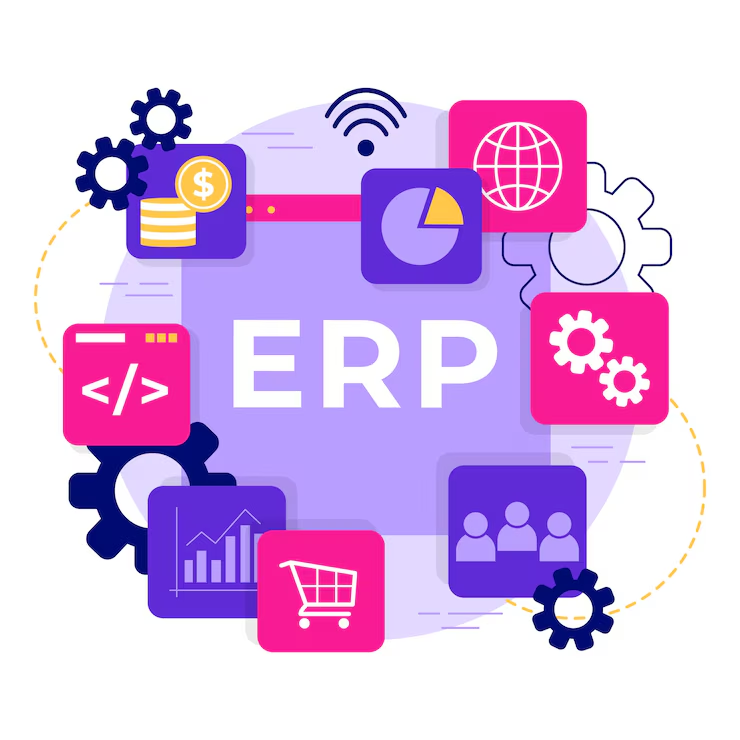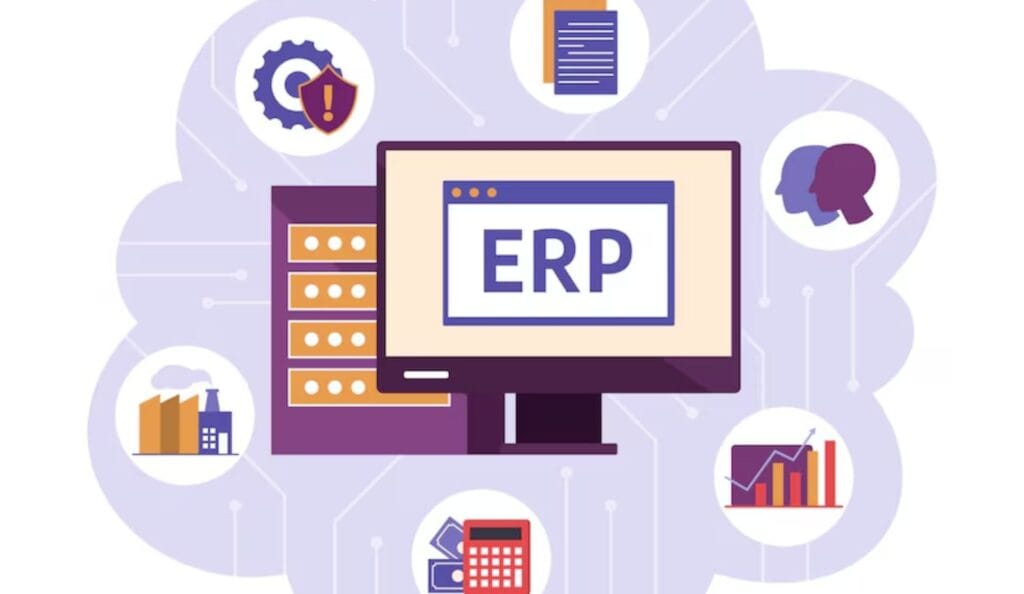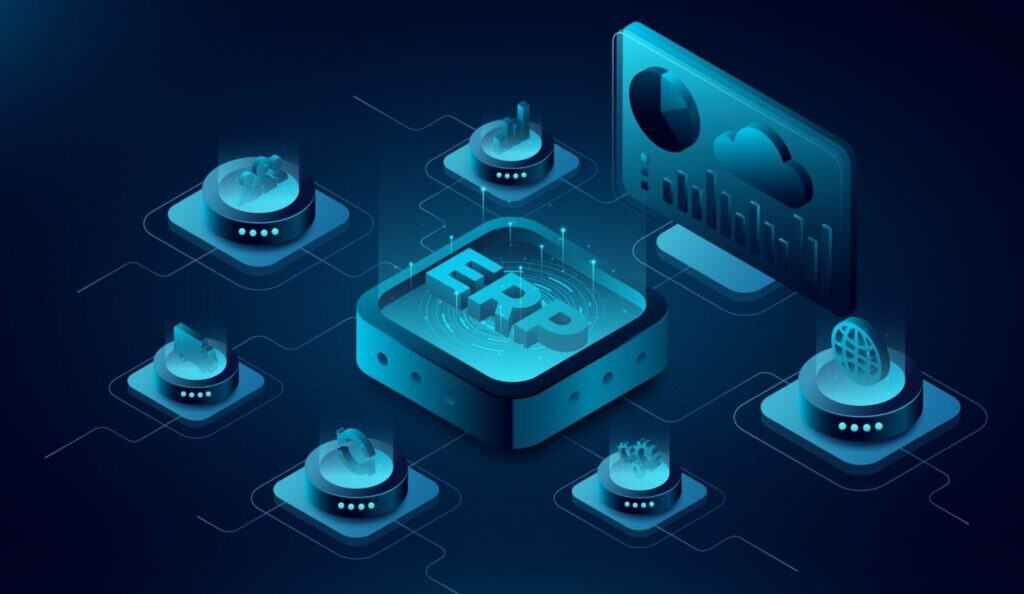
By Kayla Anderson April 14, 2025
ERP systems help measure and manage many different aspects of a business such as planning, purchasing, stock tracking, selling, marketing, finance, and human resources. The market for ERP systems is expected to reach $103 billion in 2029. These systems gather all business data in one place for various departments to work collaboratively and ensure correct information is made available.
In addition, they streamline administrative work, automate repetitive functions, and enhance data analysis and reporting. ERP systems can expand to incorporate new data or processes as businesses do and also help in monitoring regulations. The payment functionality of an ERP plays a major role in a company’s operation.
Understanding ERP

Within your planning system, one of the most important aspects of finance is ERP payment processing, which provides companies with the insights they need into how payments are handled. It covers everything from creating invoices to ensuring there is no mismatch in payments. In view of technological advancements, businesses need to manage payments successfully. ERP systems are required to keep pace with international trade, managing diversified payment options, local banking regulations, and tax legislation in multiple jurisdictions.
Also, financial management is key for businesses to keep afloat and continue. Modern ERP systems allow businesses to view and track their finances, to make intelligent decisions about when and how they make payments. Today, ERP payment processing is therefore indispensable to business success.
How do they Work?
Central database
The main database in ERP systems stores all the data of business departments. It also ensures that everyone utilizes the same information, improves precision, and lowers mistakes.
Modules
An ERP system has different modules like supply chain, sales, finance, and human resources. Based on the above, companies can choose the modules that they require to configure a system that fits their needs.
Real-time integration
Modules of ERP systems work or cooperate with one another. For example, the production schedule is changed and the inventory is automatically updated with each sale.
Automation
ERP systems automate data entry, financial computations, and report preparation, moreover, this reduces errors and saves time.
Reporting and analytics
ERP systems have the ability to examine data in order to monitor performance, spot patterns, and assist companies in making decisions.
Access control
ERP systems enhance security and safeguard data by limiting access to specific features or data according to employee roles.
Evolution of ERP
ERP systems’ development and evolution demonstrate how they have changed to satisfy shifting technological and business requirements. They began as inventory management systems in the 1960s and progressed through MRP and MRP II to incorporate scheduling, labor, and production in the 1980s. ERP systems evolved into completely integrated solutions by the 1990s, adding features like HR and finance.
ERPs enabled worldwide and remote access as the internet grew in popularity in the 2000s. While the 2020s brought AI and IoT integration for real-time monitoring, predictive analytics, and improved automation, cloud-based systems in the 2010s increased scalability and affordability. These patterns demonstrate ERP’s progress in facilitating quicker, more intelligent decision-making.
Benefits of ERP
ERP software serves as a central repository for companies, gathering data from multiple divisions to promote effective communication and information exchange. With sales, finance, and operations all available in the same database, it enables smooth operations. Beyond operational efficiency, ERP software provides a number of advantages, such as precision, dependability, astute decision-making, increased productivity, scalability, improved customer relations, reduced expenses, compliance, remote access, and frequent updates.
ERP software’s accuracy and dependability are crucial because they minimize errors and enable confident decision-making. Leaders can respond to changes in the market or plan big moves with the help of real-time data and in-depth analysis. Because ERP systems can handle more data, users, and complexity as a business grows, they also free up time for strategy and innovation.
Understanding client preferences improves customer relations and results in more individualized and responsive service. ERP systems also lead to better planning, less waste, and fewer mistakes, all of which improve the bottom line. Maintaining business operations and avoiding fines also depend on following rules and regulations. Cloud-based solutions enable remote access, which makes them perfect for working remotely or having connectivity while on the go.
Benefits of automated ERP payment processing
Financial operations benefit greatly from automated payment processing. Here is a condensed version of the main ideas:
Efficiency
Data entry and reconciliation are handled by automated systems, which speed up laborious procedures. Teams can handle more payments without adding more employees, freeing them up to concentrate on critical tasks.
Error reduction
Automation avoids errors such as incorrect amounts or duplicate payments. It detects mistakes before they become issues by using checks and matching rules.
Cash flow management
Instantaneous cash position updates are provided by real-time payment tracking. Leaders are able to better manage capital, use discounts, and determine when to make payments.
Resource optimization
By automating routine payment tasks, teams can focus on planning, analysis, and vendor management. The finance function gains more value as a result.
Customer experience
Clients benefit from speedier processing, more payment options, and unambiguous payment status updates. These characteristics boost customer satisfaction and fortify commercial ties.
Business intelligence
Payment data is gathered by automated systems and analyzed. This aids in pattern recognition, forecasting, and payment strategy decision-making.
Importance of Integrating ERP with Modern Technology

For companies in the USA, integrating new payment technologies with ERP systems is a crucial first step. It enhances customer experiences and helps them work more efficiently. ERP systems facilitate the management of various business operations, such as finance, sales, and inventory, and new payment technologies make transactions simple and secure. Businesses can automate processes like reporting and invoicing by integrating these systems, which lowers errors and saves time. Additionally, by keeping financial data current, this connection aids in cash flow and complies with industry regulations.
Moreover, better operations are not the only benefit of integrating ERP and payment systems. Customers are more satisfied when businesses offer better payment options, such as automatic billing and currency acceptance. Businesses can also effortlessly handle numerous transactions across various channels thanks to this integration. This link is becoming increasingly crucial for businesses looking to maintain their competitiveness in a market that is changing quickly as the demand for digital payments and ERP solutions increases.
Modern ERP Payment Solutions Importance Features

Beyond simple processing, integrated payment solutions provide sophisticated features like-
- Automated reconciliation, multi-entity support, intelligent payment routing, vendor management, smart workflows, and payment optimization.
- These systems maximize efficiency and reduce processing costs by automatically determining the best payment option based on variables like cost, speed, and vendor preferences. Even with incomplete data, AI-powered matching algorithms can achieve high match rates in complex scenarios like cross-currency transactions, partial payments, and payment batching.
- Complex organizational structures, payment processing across various legal entities, currencies, and banking relationships, and intelligent workflows that adjust to various payment types, amounts, and risk levels are all handled by these solutions.
- Vendor portals lower administrative burden and increase vendor satisfaction by enabling suppliers to track payment status and manage their payment information.
Integrating ERP with Payment
Step 1 Payment Workflow Assessment
Analyze every stage of your payment process, from generating invoices to balancing payments, to begin improving it. Look for areas where the process can be made more efficient through integration. Choose the payment methods your business will accept, like credit cards, bank transfers, or online payments, and ensure your payment processor can handle them. Finally, to ensure data security, make sure your system complies with industry standards such as PCI DSS for credit card payments.
Step 2 Processor’s Technology
API compatibility is crucial for seamless data transfer and real-time synchronization when integrating a payment processor with your ERP system. To increase functionality, look for features like fraud detection, multicurrency support, and automatic payment reconciliation. To further streamline the implementation process, assess the degree of integration support provided, such as thorough documentation, software development kits (SDKs), or specialized support teams.
Step 3 Integrating Plan Outline
Make a precise integration plan outlining the communication channels between an ERP system and a payment processor. This ought to contain information about webhooks for transaction updates, data endpoints, and effective error-handling procedures. Map the data flow between the ERP and the payment processor as well. For smooth data synchronization, indicate which ERP system fields match the details of the payment transaction.
Step 4 Functionality Testing
Ensuring data integrity and appropriate workflow through comprehensive end-to-end testing that covers all transaction scenarios, including successful payments, failures, refunds, and disputes, is essential to a robust system. To determine whether the system can manage large transaction volumes without experiencing any issues, conduct load testing. Finally, conduct security tests, such as vulnerability scans and penetration testing, to guarantee that payment information is safe during the integration.
Step 5 Training and Documentation of Staff
Make training materials that are suited to the various positions in your company and demonstrate how the integration affects their duties. Create thorough documentation that includes user manuals and technical details to serve as a useful reference for training and troubleshooting.
Step 6 Integration Process and Rollout
Start the integration process with a phased rollout, employing a pilot group to gather feedback and test performance under controlled conditions. Make sure that crucial metrics, such as transaction times, failure rates, and data accuracy, are tracked in real time.
Step 7 Establishing Feedback
Establish a feedback loop to collect user opinions on the usability and performance of the integration, guaranteeing ongoing enhancement. Furthermore, evaluate the integration’s scalability on a regular basis to make sure it can manage increased transaction volumes, business growth, and international expansion.
Conclusion
ERP systems are important for today’s businesses because they connect different departments and make operations easier. As financial tasks and global payments become more complicated, using ERP for payment processing is key to business success. ERP systems help manage data, automate tasks, and keep customers happy.
Moreover, adding advanced payment technology to ERP systems helps businesses stay competitive, safe, and able to grow. Modern ERP solutions quickly handle complex financial tasks and offer smart features like AI matching, automated reconciliation, and vendor self-service portals. Successfully using ERP is not just a tech upgrade; it’s a smart strategy that helps businesses work better, respond quicker, and grow in today’s digital world.
Leave a Reply